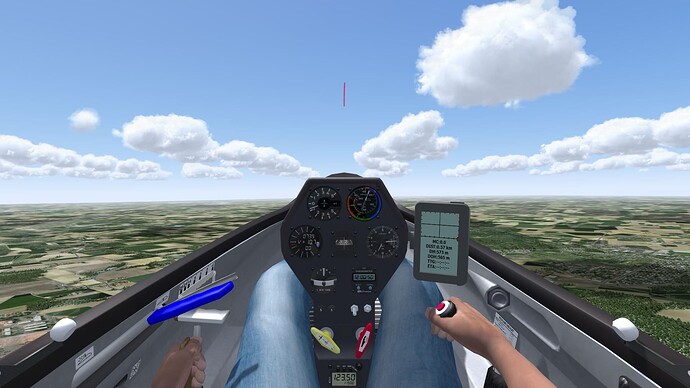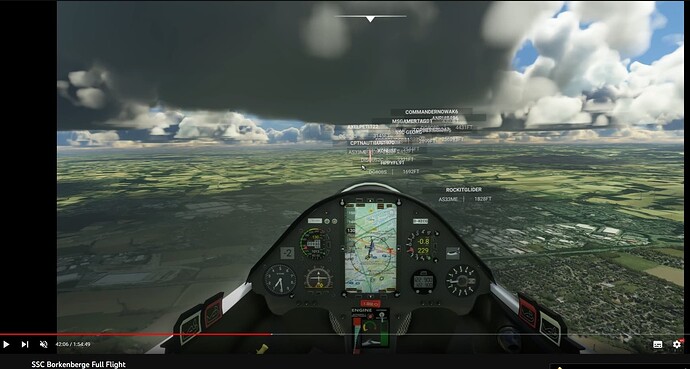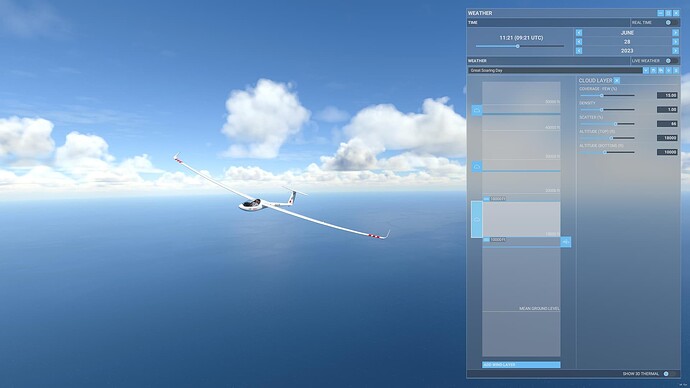I think it’s not worth encouraging young pilots to violate VFR flight safety rules… ![]()
What an incredibly well-done analysis you’ve put together here ANRI, thanks a lot! I’ve spent a lot of time trying to figure out what was going on under the hood in the sim regarding thermals, but i never got anywhere near the level of detail you’ve come here. I think there are two points here that really cannot be underestimated, with the first being:
In principle, there is no need to “invent” something new, you just need to configure these dependencies correctly.
I think it’s obvious that no simulator, at least in the foreseeable future, can accurately calculate the “real air”, and the whole point is that that isn’t needed. Tweaking the variables to accurately model is what needs to be focused on, as that’s what’s possible and sufficient.
Secondly, and this concerns everyone, not just glider pilots, is that:
These errors significantly affect not only gliders, but also all aircraft. Not only in weather presets, but also in real weather.
Since SU11, flying lighter aircraft feels more “alive” for sure, but it’s completely unrealistic. Any sunny day where i have to cross over a bit of water and then fly over land again, i know that i’ll suddenly be violently shot up with >1000ft/min, making final approaches over water almost impossible. Flying over a large grain field? Same thing, better cut the engine completely to not suddenly be 500ft above your cruising altitude. This unrealistic thermal behavior as a result of incorrect variables make flying worse for most types of players. I really hope this report gets the traction needed to bring about changes to the model as soon as possible. Agian, thanks for putting it so precisely and accurately, because most of the discussions so far were purely anecdotal. Great stuff!
The most important aspect is that the ground thermal is the cause of the cumulus cloud, not some “cloud thermal”, and this is not correctly modelled now in MSFS and creates confusion to RL glider pilots.
The aspect if the direct connection between ground and cloud exists or not is not that important - it is just a matter how long ground source was able to generate rising air, how fast it rises and how low condensation height is - if generation time was short it generated short puff that drifted with the wind (but often on a predictable path!) from the heat source, if the generation time was long it generated long skewed by the wind column of rising airmass that literally connects ground to the forming cloud - this cloud will be elongated horizontally in the downwind direction.
In some places/conditions the first case is more often in other places/conditions the second one, thus in literature both models (“bubble” and “column”) are discussed, like this illustration to a gliding book:
Of course cloud drifts with the wind further and lives until all rising (and drifting) air from the ground thermal reaches condensation height + some sucking due to latent heat, until it slowly dissipates by mixing with surrounding air.
Even on your picture treating this picture literally you have there not a short puff of thermal, but a long thermal column - at picture “a” already almost reching condensation height, while still generating rising air at the ground, so there would be a state in time (lets call it a+) between picture “a” and “b” where the first rising air reach the condensation height, thus Cu cloud is forming, while still at the same time ground source still generates rising air:
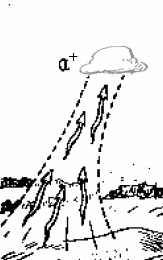
There is obviously no mechanism that could prohibit such state. It is easy to calculate that with conditions like: 15min of thermal source lifting air verticaly rising at 3m/s (circling glider would experience it as 2m/s) and condensation height 1500m - as long as 400sec will pass with direct ground-cloud connection - from first lifted airmass to the end of lift generation at ground source (of course could will live longer as this end if airmas still needs another 500sec to rise to confenasation height and longer due to latent heat still sucking some air and slow mixing).
I think with “cloud thermals” Asobo tried to model the lift generated due to latent heat of condensation strong under stormy, strongly vertically evolved clouds, but very gentle and only near the cloud base under typical Cu cloud - and if that is the case it is okayish as it is, the thing requiring fixing are those “ground thermals”.
That is why I think the current model cannot be fixed by only adjustements of parameters - it needs correct modeling of ground thermals generating airmass that in turn should form Cu clouds when reaching condensation height.
Sad to see many of the issues mentioned in this thread are still present in the SU12 Beta.
- Cloud lift is still only present under extremely dense clouds.
- Small hills still create the same updrafts when hit by wind as huge mountains.
- Hot Air (blue) thermals are still extremely strong, eliminating the need to seek thermals below clouds for gliders.
I cannot stress enough how much a change in updrafts below clouds is needed.
In Condor good lift can be found under clouds that look like real Cumulus clouds
In MSFS we have to set our clouds to look like this to find any lift below them
Density, TopAltitude & Coverage need to be way to high for a cloud to produce lift in MSFS.
Suggestions on how to fix it (the green curve) have been posted by @ANRI8496 in the beginning of this thread, but unfortunately nothing has changed in this regard in the SU12 Beta.
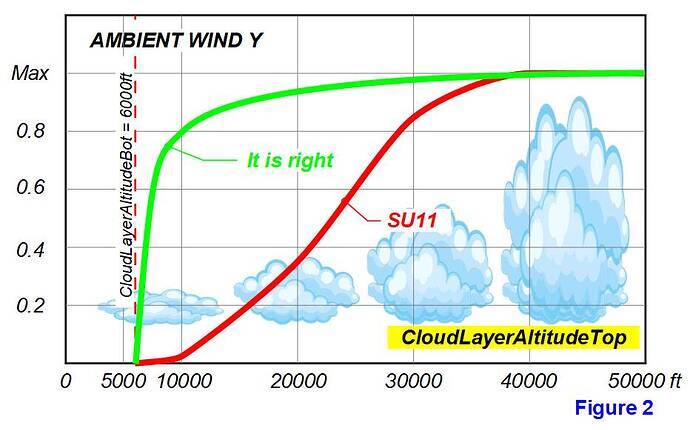
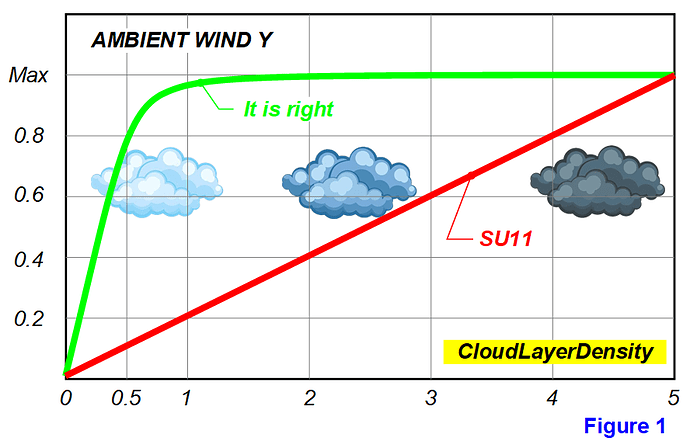
I’m trying to set up realistic looking clouds for soaring in the sim, but getting close to 0 lift in MSFS
I’m experiencing this issue as well. +1
My vote for this modification!!!
thank you
Voting too!
